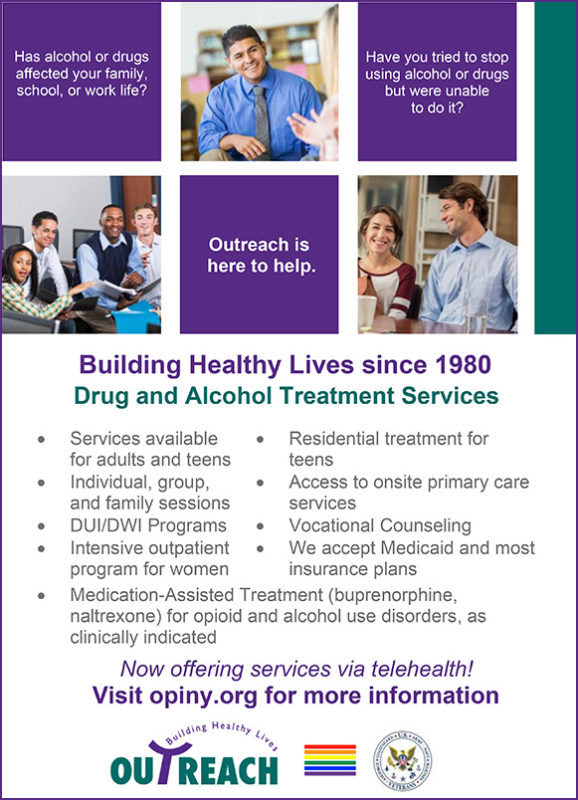In his landmark work on organizational transitions, William Bridges uniquely explains how external change gives rise to an internal transition process (W.Bridges, Transitions, 25th Anniversary 2017). He names the time between an ending but before a new beginning the “neutral zone,” which is characterized by a sense of disorientation and confusion. The old way has ended, but the new way has not yet begun. At no time in recent years has this been truer for the behavioral health field than during the current COVID-19 crisis.

Mary Brite, LCSW, CASAC
Substance use and mental health treatment providers who had been preparing to expand technologies to grow capacity and reach more individuals, families and communities in need, were suddenly challenged to add telehealth to our service continuum, and quickly accelerate its implementation, not only as a means of growth, but to avoid service disruption for existing clients – an organizational challenge further complicated by the personal challenges that staff and clients have inevitably experienced related to COVID-19. Despite the uncertainty of the “neutral zone,” however, rapid and unexpected transition from brick and mortar programming to a virtual clinic can be done effectively, swiftly and (almost) painlessly.
Provider agencies and managers are well familiar with the nuts and bolts of program development, as State regulations, funding requirements and agency policies and procedures help to guide and structure implementation of new initiatives and models. But in a crisis environment, fraught with urgency, even the most experienced program manager may be overwhelmed with a plethora of new information and competing concerns. Bridges proposed that the antidote to disorientation in the neutral zone is structure, information and communication. Understanding that, the way in which we navigate through it is essential. By prioritizing structure, information and communication, we can provide clarity and target staff energies to the correct priorities and knowledge necessary to “get it done.”
An optimal approach can assist crisis leaders in simultaneously building and running a virtual clinic, while ushering staff through critical change. These “tips” can ease the process:
Structure: Define What We Have and Where We Want to Go?
- Develop your crisis mission statement. This is clearly not the time to develop a comprehensive mission statement, but quickly and thoroughly establishing a crisis mission statement can serve as your North Star during the crisis period. An example might be: “During the current COVID-19 health pandemic, our program will prioritize the health and safety of all staff and clients, providing uninterrupted service delivery, while maintaining timely access to care for all in need.”
- Organize and deploy your team. If you have a standing crisis management team (CMT), ask yourself: is the team adequately situated to address the crisis, or should an ad hoc team be developed to meet the emerging need? The CMT should be led by agency leaders who have a wide-ranging view of the environment, both within and external to the organization, and who have firm decision making authority. The rapidly changing COVID-19 environment may require us to look beyond titles and authority, and more to individual staff characteristics. Staff from all levels who have the ability to work well and quickly under pressure, and who present excellent communication and interpersonal skills, are a welcome addition to the CMT.
- Assess current resources in relation to crisis goals. Swift analysis of resources ensures that agency energy and focus are targeted in areas that will offer highest contribution to successful change. If uninterrupted service delivery is a goal during the shift to telepractice, how does agency technology shape up? Telepractice requires a reliable, HIPAA-compliant and easy-to-access platform. Staff must be well trained in the technology and should be able to assist clients in its use. If a crisis goal is “ensuring timely access to services for all in need,“ is current technology able to meet it?
Information: Create a Crisis Library
- What is a crisis library? A crisis “library” is the organized storage of material related to the crisis, as it unfolds. This might include external communications from state and local governments, related internal communications about the crisis, updated regulatory information and status reports, and more.
- Identify a “crisis information manager.” The earliest days of a crisis can pass in a whirlwind. Information, at times contradictory, is coming from all directions and can change daily. Identifying a specific staff member or members to sort, review and maintain relevant data, can free other team members to concentrate efforts on designing crisis policies, protocols and guidance. The identified crisis information manager can collaborate with other leads, enabling providers to divide and conquer necessary tasks, while simultaneously building a type of management journal that can be easily referenced long after the crisis has resolved.
Communication: Develop a Strategy Aligned with your Crisis Mission
- Frequent, targeted, and transparent communication. The uncertainty of crisis requires frequent and targeted communication. COVID-19 is affecting all individuals, worldwide, in some way. Our current holding pattern, fraught with insecurity, personal worries, and financial and health worries, requires frequent communication from all levels of leadership, with an understanding of what agency staff may be experiencing. It can be helpful to assign responsibility for specific types or levels of communication, to different staff members. For example, executive leadership, as transparently as possible, will want to provide a macro sense of the larger environment and the agency’s place in the new order. A program director, focusing on new workflows and coordination of staff, will channel the communication assuring its dissemination and intended purpose of uplifting morale. Key to a communication chain is that it is in line with the overall crisis mission.
- Building in a process for rapid feedback. Through continuous quality improvement, rapid feedback must be part of the communication strategy. Never is it more important for provider agencies, and the staff within, to be able to pivot and shift depending on updated information or new systems that aren’t working as planned. Traditionally obtained data, tracked through the electronic medical record and client and staff surveys, can offer insight into the effectiveness of program elements. But, in crisis, it is helpful to employ less formal methods for feedback, as well. Regular team check-ins – “huddles” – throughout different “layers” of an agency, can serve as a rapid feedback loop. By their nature, huddles are brief and targeted “non-meetings” which serve to affirm the current situation, confirm which plans are already in place, and assess any need to change the plan (SAMHSA.gov, retrieved 2020, May1). Huddles communicate clinical information and are 20 minutes or less. in non-crisis times. Transferring the huddle concept to managing crisis can ensure that two-way communication is maintained.
- Daily change requires prompt communication, and sensitivity to staff fatigue. The reality of the COVID-19 situation is that change occurs daily, sometimes multiple times throughout the day. One change may necessitate multiple micro-adjustments that ripple through the service delivery chain. Balancing the need to ensure communication at regular intervals, while respecting the very real impact of change-fatigue among staff, requires being in-tuned with what they need to hear, and when.
In times of crisis, behavioral health and substance use disorder providers’ experience in program development is a necessary foundation. Equally important is being cognizant of the process of change and its impact on individuals. Taking a proactive response to sudden, unfamiliar and transformational change, supports a smooth and (somewhat) seamless transition to the “new normal.” Virtual services through telepractice is a modality that is likely to stay and will certainly benefit a cohort of our clients. An underlying theme of the COVID pandemic is that it requires that we create a balance between current and effective evidence-based care in clinical settings, and to consider how clients are or can be best served through telepractice. Structuring program development through the change process extends the benefit to staff and paves the way for lasting organizational success.
Mary Brite, LCSW, CASAC, is Vice President of Outpatient Services at Outreach Development Corporation.






